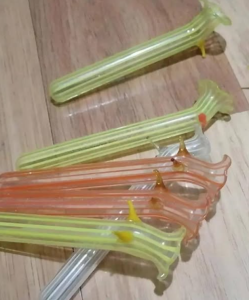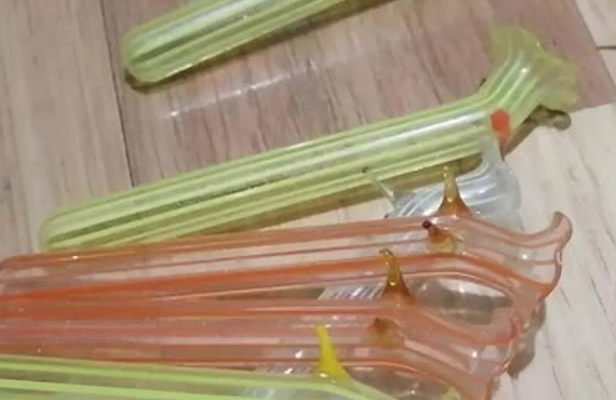🕰️ The Velvet Box: A Story of Secrets, Memory, and the Quiet Weight of Legacy
It was a rainy afternoon in Siem Reap, the kind that makes the air feel thick with memory. The house was quiet, save for the soft hum of the ceiling fan and the occasional creak of old wood. I had come to help sort through my grandmother’s belongings—a task that felt more like a ritual than a chore. Her closet, untouched since her passing, stood like a sealed chapter waiting to be read.
Behind folded linens and neatly stacked scarves, I noticed a small velvet box tucked into the corner. It was wrapped in a faded silk handkerchief, the kind she used to wear knotted around her wrist. The box was heavier than it looked, and when I opened it, the world seemed to tilt.
Inside was a tarnished locket, shaped like a teardrop. It wasn’t the object itself that startled me—it was what lay within. A photograph, sepia-toned and worn at the edges, of a man I didn’t recognize. He was standing beside my grandmother, younger than I’d ever seen her, smiling in a way that felt unfamiliar. Beneath the photo was a folded letter, brittle with age, written in Khmer and French.
As I read, the air thickened. The letter spoke of a love that had bloomed in secret during the early 1960s, when my grandmother was a young woman working as a translator for a French diplomat. The man in the photo—Jean-Pierre—was not my grandfather. He was someone else entirely. The letter was a farewell, written on the eve of his departure back to France, promising to return, but acknowledging the impossibility of their union.
I sat there for a long time, the locket warm in my hand, the letter trembling in my lap. I had always known my grandmother as a quiet woman, dignified and reserved. She wore her silence like silk—elegant, impenetrable. But this discovery cracked something open. It stirred questions I hadn’t known to ask.
🌸 Memory as Mosaic
In the days that followed, I began to see her life not as a linear story, but as a mosaic—fragments of joy, sorrow, and quiet resistance pieced together in ways I had never imagined. The locket became a symbol, not just of a hidden romance, but of the choices she made, the sacrifices she carried, and the parts of herself she chose to protect.
I remembered the way she used to hum French lullabies while cooking, the way she paused when asked about her youth, the way she kept certain books tucked behind others on the shelf. These were not random quirks—they were echoes of a life lived in layers.
🧵 Threads of Silence
I spoke to my mother about the discovery. She was quiet at first, then confessed that she had once found the same box as a child, but had been told never to speak of it. “It was her sorrow,” she said. “And her strength.”
It made me wonder how many stories are buried in closets, wrapped in silk and silence. How many women carry legacies that never make it into family lore. How many truths are softened by time, reshaped by love, and hidden out of necessity.
🔍 The Weight of Knowing
The revelation didn’t shatter my image of my grandmother—it deepened it. I began to understand her rituals differently. Her weekly visits to the temple, her meticulous care for her garden, her insistence on teaching me French phrases even when I resisted. These were not just habits—they were bridges to a past she had never spoken of.
I also felt a quiet grief. Not for the romance itself, but for the loneliness it must have carried. For the way she had to compartmentalize her heart. For the decades she lived with a memory folded into a velvet box.
🕯️ Legacy Reimagined
In the weeks that followed, I began writing about her—not just the grandmother I knew, but the woman she had been. I wrote about Jean-Pierre, about the letter, about the way love sometimes blooms in the margins. I wrote about silence as a form of strength, and memory as a form of resistance.
I placed the locket on my desk, beside a photo of her holding me as a baby. It felt right to keep them together—past and present, known and unknown.
🌿 Healing Through Story
The act of discovering that box was more than a moment of surprise—it was a portal. It allowed me to see my family not as a fixed narrative, but as a living archive. It reminded me that healing often begins with curiosity, and that love—especially the kind that endures in silence—is never truly lost.
I’ve since begun asking more questions. Not just about my grandmother, but about the women in my family whose stories remain half-told. I’ve learned that closets are not just places for storage—they are sanctuaries of memory. And sometimes, the most profound truths are found not in what is said, but in what is kept.
✨ Closing Reflection
What is this mysterious item I discovered in my grandmother’s closet? It is a locket, yes. A letter, yes. But more than that, it is a key. A key to understanding the quiet strength of a woman who lived with grace, who loved deeply, and who chose silence not out of fear, but out of dignity.
It is a reminder that every family has its hidden chapters. That every elder carries a library of stories waiting to be read. And that sometimes, the most transformative discoveries come not from answers, but from the questions they stir.


